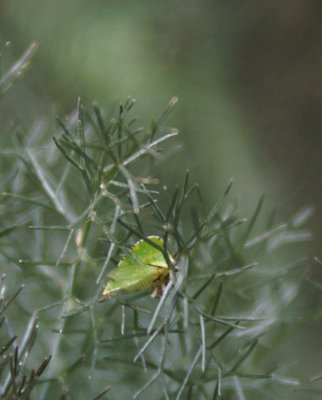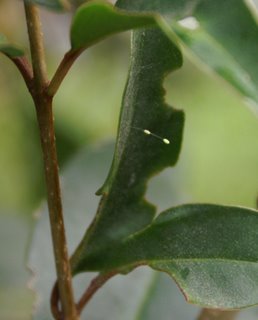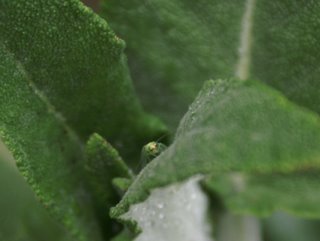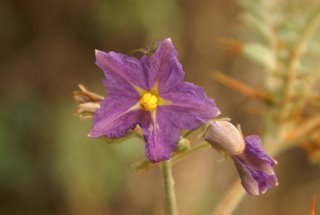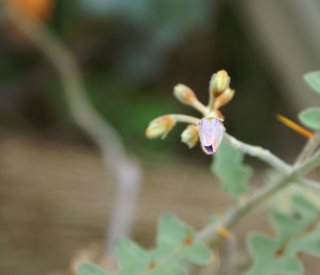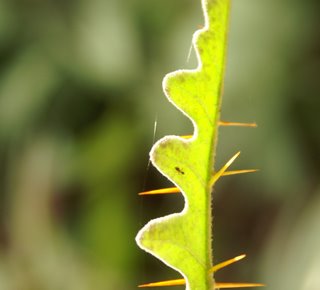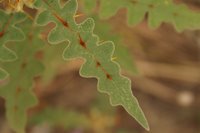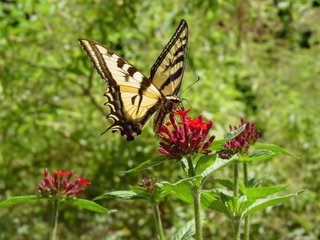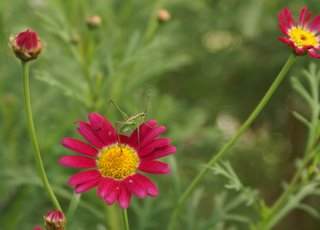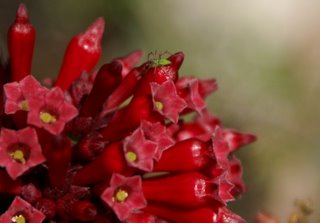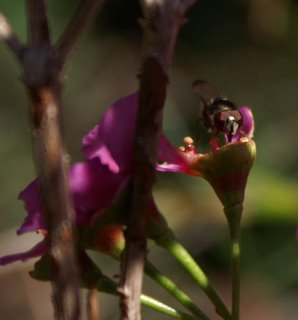 This very young crab spider was lurking deep within the marguerite foliage. As adults these spiders are commonly found cryptically colored within flowers, where they pounce on unsuspecting bees, wasps, flies etc.
This very young crab spider was lurking deep within the marguerite foliage. As adults these spiders are commonly found cryptically colored within flowers, where they pounce on unsuspecting bees, wasps, flies etc.Often spiderlings display the same hunting behaviors as the adult spiders, but obviously they must find appropriately sized prey. Maybe young crab spiders avoid hunting in flowers because the most likely prey visiting them are too powerfully winged for the small spiders to subdue.







